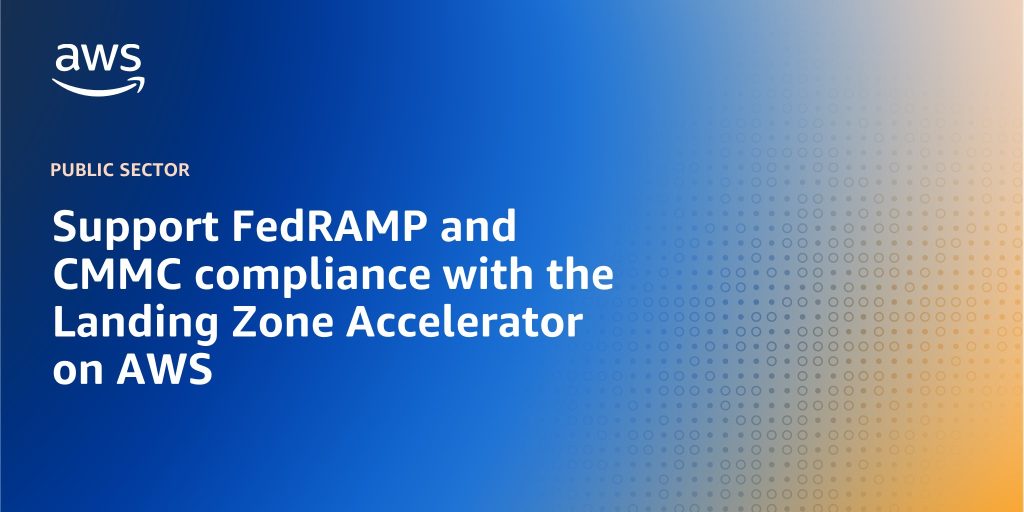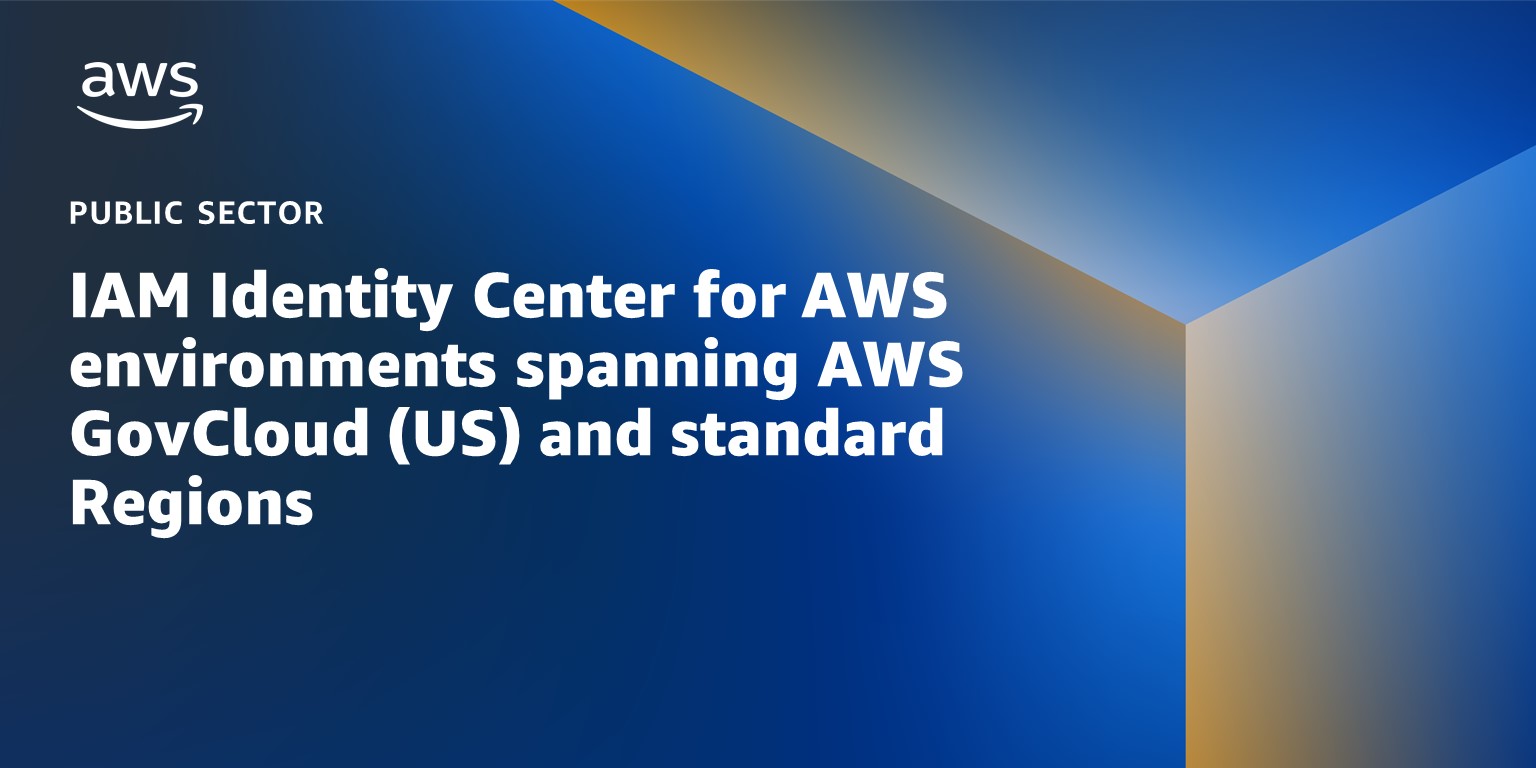AWS Public Sector Blog
Tag: AWS GovCloud (US)
Resiliency imperatives for CIOs with sensitive and highly-available cloud environments in AWS GovCloud (US)
Amazon Web Services (AWS) customers, technology leaders, and government agency CIOs continually balance risk and reward to accomplish many things by using AWS GovCloud (US). They work to transform citizen experiences, save taxpayers money, support sustainable growth, expand market presence, modernize legacy systems, increase security, drive efficiencies, strengthen brand equity, and reduce environmental impact.
Connectivity patterns between AWS GovCloud (US) and AWS commercial partition
AWS GovCloud (US) was architected to have isolation (both physically and logically) from other AWS partitions for compliance. For this reason, AWS services, used to privately interconnect virtual private cloud (VPC) hosted resources within the same partition like AWS PrivateLink, Amazon Virtual Private Cloud (Amazon VPC) peering, or AWS Transit Gateway peering, cannot span from AWS GovCloud (US) to commercial Regions natively by design. In this post, we will highlight four connectivity patterns customers can use to interconnect VPC hosted systems cross partition.
The U.S. Air Force improves aircraft readiness with AI and predictive maintenance solutions
The US Air Force (USAF) is responsible for more than 5,400 aircraft with an average age of 28 years. Read this blog post to learn how USAF employs predictive maintenance solutions, powered by Amazon Web Services (AWS), to predict when aircraft need to be grounded for repairs or updates, which helps maintain mission readiness while lowering maintenance costs.
AWS Partners help public sector organizations harness the power of data
Organizations deal with ever-growing data volumes. This means that growth-minded businesses must put data at the heart of every application, process, and decision. But how you use your organization’s data is the key to accelerating innovation and accomplishing your organizational goals.
Migrate and modernize public sector applications using containers and serverless
Many public sector customers are interested in building secure, cost-effective, reliable, and highly performant applications. Technologies like containerization and serverless help customers migrate and modernize their applications. In this blog post, learn how public sector customers use offerings from AWS like AWS Lambda, Amazon Elastic Kubernetes Service (Amazon EKS), Amazon Elastic Container Service (Amazon ECS) to build modern applications supporting diverse use cases, including those driven by machine learning (ML) and generative artificial intelligence (AI). If you want to learn more on this topic, please register to attend the webinar series, Build Modern Applications on AWS.
Support FedRAMP and CMMC compliance with the Landing Zone Accelerator on AWS
Some US federal agencies and those who collaborate with them must support an automated, secure, and scalable multi-account cloud environment that meets Federal Risk and Authorization Management Program (FedRAMP) and Cybersecurity Maturity Model Certification (CMMC) standards. To support these needs, AWS customers and partners can deploy the Landing Zone Accelerator (LZA) on AWS. Recently, AWS worked with Coalfire, a FedRAMP-approved third-party assessment organization (3PAO) and AWS Partner, to assess and verify the LZA solution.
Implement a secure, serverless GraphQL architecture in AWS GovCloud (US) to optimize API flexibility and efficiency
GraphQL is a query language and server-side runtime system for application programming interfaces (APIs) that prioritizes giving clients exactly the information they request and no more. GraphQL can help public sector customers focus on their data and provide ways to explore the data in their APIs. Learn a reference architecture using serverless technologies that you can use to build GraphQL-enabled solutions in the AWS GovCloud (US) Regions to unify data access in real-time and simplify operations.
Navigating common use cases spanning AWS GovCloud (US) and standard AWS
There may be use cases where customers must orchestrate actions spanning AWS GovCloud (US) and standard AWS partitions. The common reasons customers may need to invoke AWS services in a standard account from an AWS GovCloud (US) account (or vice versa) include: cross-domain applications, feature parity, and if the AWS service doesn’t exist in AWS GovCloud (US). In this blog post, learn how to navigate these scenarios.
New research for public sector CIOs as they prepare for digital assets
Public sector regulatory agencies are at an inflection point as digital assets have emerged in the private sector in the form of cryptocurrencies, stablecoins, non-fungible tokens (NFTs), and central bank digital currencies (CBDCs). To inform this process, AWS has collaborated with industry analyst firm, Constellation Research, to write a new research report available to the public. “The CIO Imperative for Digital Assets in the Public Sector” presents an exploration of the requisite topics to get CIOs and their teams up-to-speed and ready for this journey.
IAM Identity Center for AWS environments spanning AWS GovCloud (US) and standard Regions
AWS IAM Identity Center (successor to AWS Single Sign-On) provides administrators with a simple way to manage identity and access (IAM) across numerous AWS accounts. IAM Identity Center is available in the AWS GovCloud (US) Regions, enabling customers to simply manage access to numerous AWS accounts in their AWS GovCloud (US) organizations. In this blog post, learn four different architecture patterns for providing an organization’s AWS users with access to both standard and AWS GovCloud (US) accounts using IAM Identity Center that can help minimize administrative overhead and simplify the user experience.









